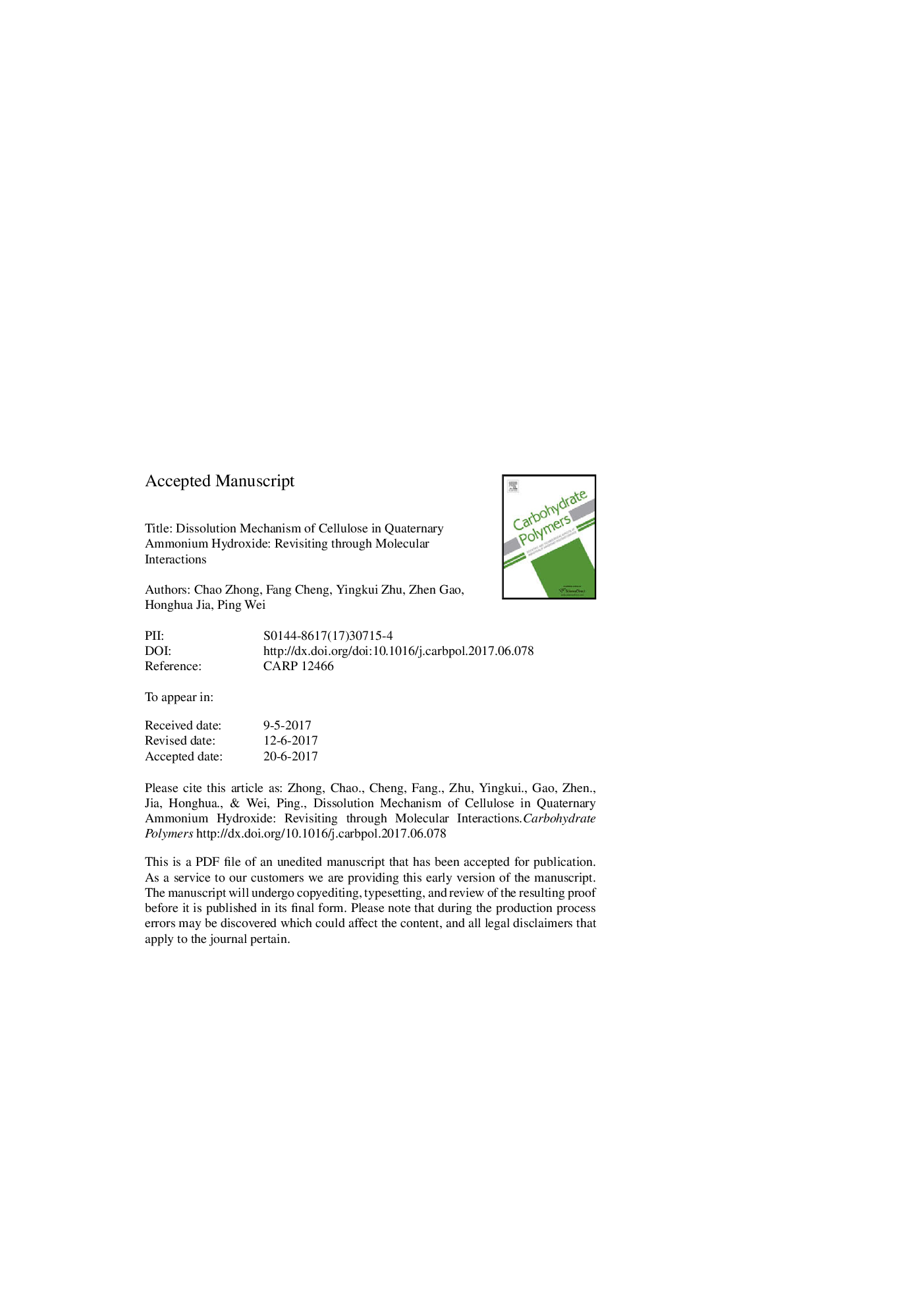| Article ID | Journal | Published Year | Pages | File Type |
|---|---|---|---|---|
| 5156823 | Carbohydrate Polymers | 2017 | 28 Pages |
Abstract
Quaternary ammonium hydroxide (QAH) solution has been used to dissolve cellulose and made great progress in recent years. While, its cellulose dissolution mechanism is still in unclear. Here, series of QAH with varied cationic alkyl chains were chosen for the investigation. The solubility of cellulose in QAH was measured, which allowed us to study the effect of cationic structure on cellulose dissolution. Also, the Kamlet-Taft parameters as well as 1D and 2D NMR analyses of QAH-cellulose/cellobiose system were measured. Results indicated that both the anions and cations were essential for cellulose dissolution: anions were responsible for interaction with hydroxyl protons on cellulose, re-forming hydrogen bonds and leading to structural disruption in cellulose; α-methylene on cations would interact with electropositive carbon atoms on cellulose via electrostatic or Van der Waals force, facilitating inner-structural disruption. The synergistic effects eventually resulted in complete disruption of hydrogen bonds and thus effective dissolution of cellulose.
Related Topics
Physical Sciences and Engineering
Chemistry
Organic Chemistry
Authors
Chao Zhong, Fang Cheng, Yingkui Zhu, Zhen Gao, Honghua Jia, Ping Wei,
